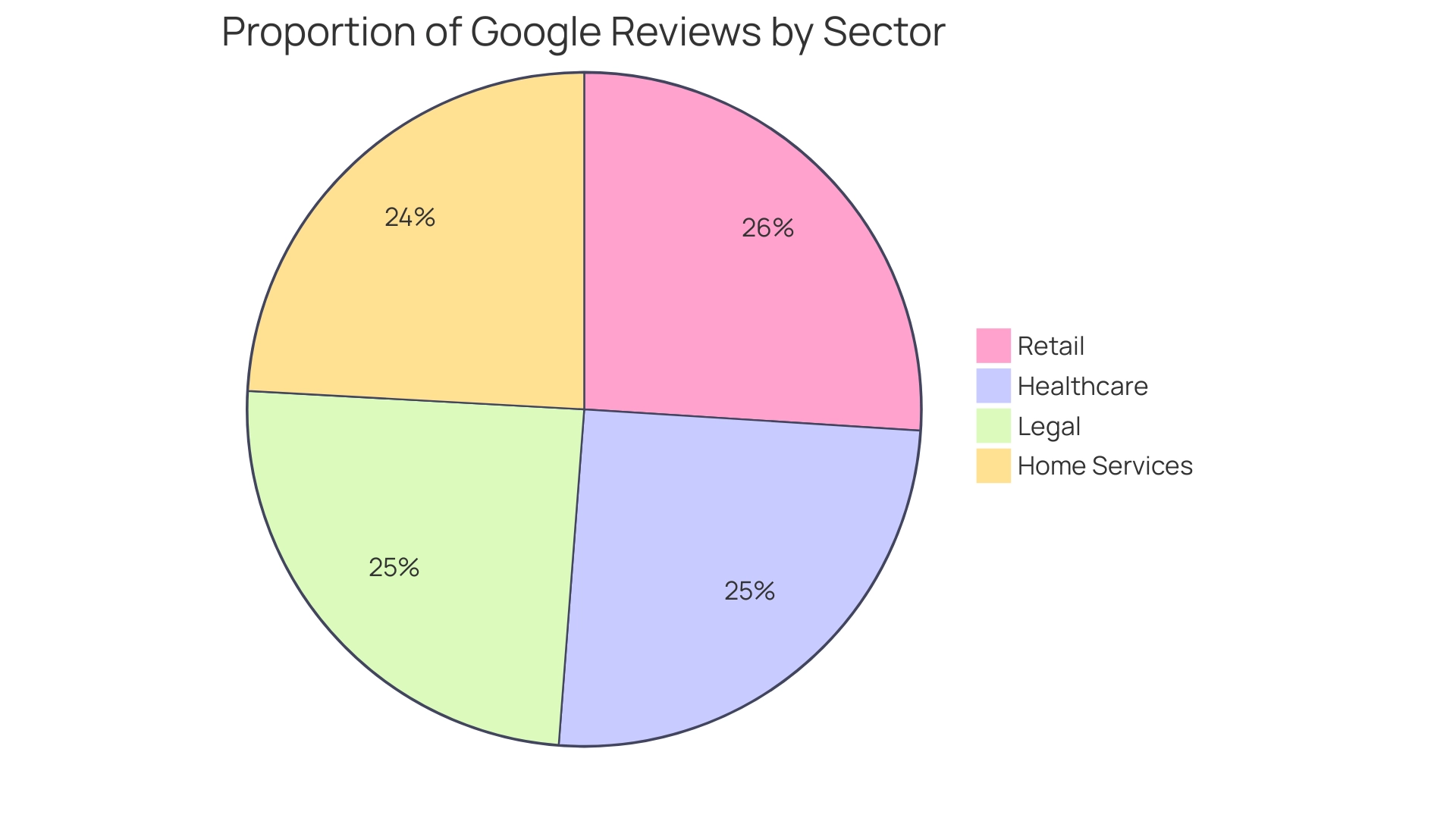Introduction
In the digital age, the visibility of online reviews plays a pivotal role in shaping consumer perceptions and influencing purchasing decisions. Google, as the leading platform for reviews across various industries, has implemented complex algorithms and stringent policies to ensure the integrity of its review system. However, these measures can sometimes lead to legitimate reviews being hidden, leaving businesses grappling with the consequences.
Understanding the factors that contribute to the visibility of Google reviews is essential for organizations aiming to optimize their online reputation and attract new customers. This article delves into the following topics:
- Reasons behind missing reviews
- Importance of adhering to Google’s guidelines
- Actionable steps businesses can take to troubleshoot and resolve review-related issues effectively.
Understanding Why Google Reviews May Not Be Visible
Several factors can compromise the visibility of reviews, including instances where my review isn’t showing on Google, which are primarily driven by the platform’s sophisticated algorithms and stringent policies. Google hosts an overwhelming 97% of retail, 94% of healthcare, 92% of legal, and 90% of home services evaluations, underscoring its significance in the realm of online reputation management. The platform employs automated systems designed to filter out feedback that may seem suspicious or that violate established guidelines.
For instance, if an evaluation is flagged by users or identified as potentially fraudulent, it may be withheld from public view, which is why my review isn’t showing on Google. This filtering process is particularly significant given that local business searches on mobile have surged by 250% from April 2016 to March 2019, underscoring the critical need for positive online visibility. Additionally, a recent report suggests that 54% of consumers will actively steer clear of companies with an online rating under the four-star benchmark, highlighting how crucial it is for reviews to be visible to attract potential patients or clients.
As stated, ‘In a world where clients have immediate, universal platforms, managing reputation has taken the front seat for shaping public opinion, and financial success.’ As the dynamics of consumer behavior evolve, illustrated by a case study showing that 58% of customers preferred an AI-written response over a human-written one, understanding these mechanisms becomes crucial for clinic owners aiming to optimize their reputation in a competitive marketplace. The ongoing advancements in the filtering algorithms for 2024 further necessitate vigilance among businesses to ensure that my review isn’t showing on Google and is not unjustly excluded.

Common Reasons for Review Removal or Flagging
Evaluations can be marked and later eliminated for numerous reasons, mainly connected to content policy breaches. Reviews that violate these policies—such as those perceived as spam or originating from accounts lacking credibility—face heightened scrutiny. For example, feedback submitted from newly created accounts or those lacking prior activity are often flagged.
Additionally, content that includes inappropriate language, personal information, or promotional material is likely to be removed. As mentioned by Emily Keenan, a content marketing expert,
We’ve heard of companies’ evaluations being erased by the thousands, entirely at the search engine’s discretion.
This reflects the arbitrary nature of Google’s assessment moderation process, which clinic owners must understand, particularly when my review isn’t showing on Google, to effectively navigate the platform.
Furthermore, users can potentially recover deleted feedback by reaching out to the reviewer, particularly if the feedback contained personal information or vulgar language. A study titled ‘Ratings and Replies of Deleted Feedback’ discovered that 73.1% of deleted entries were 5-star ratings, suggesting a significant focus on potentially fraudulent positive evaluations. Moreover, 66.1% of the deleted feedback lacked any engagement from businesses, indicating that proactive communication may mitigate the risk of deletion.
This highlights the company’s dedication to upholding a trustworthy platform by eliminating false feedback. Comprehending these elements is essential for clinic proprietors seeking to uphold a favorable online reputation, particularly when my review isn’t showing on Google and they must manage the intricacies of the rating system.

The Importance of Following Google’s Review Guidelines
Google has established specific evaluation guidelines that users must adhere to in order to ensure their assessments are published effectively. These guidelines stress the significance of:
- Steering clear of conflicts of interest
- Abstaining from sharing false evaluations
- Offering feedback grounded in authentic experiences
Adherence to these regulations is essential, not only for individual users but also for organizations aiming to establish trust and credibility in their markets.
Noncompliance can lead to evaluations being flagged or removed, which undermines efforts to enhance online visibility, particularly if my review isn’t showing on Google. Significantly, a recent study emphasizes that companies with favorable evaluations can experience a 31% rise in consumer spending, reinforcing the necessity for genuine feedback. Furthermore, for every 10 new evaluations earned, conversion rates enhance by 2.8%, demonstrating the direct effect of feedback on business performance.
Prompt interaction with feedback is crucial; 53% of clients anticipate a reply to unfavorable comments within merely seven days, as stated by Review Trackers. This responsiveness not only nurtures customer relationships but also establishes credibility, which is vital for maintaining a favorable reputation in today’s competitive landscape. As zero-click searches on the search engine have surged by 65% in 2020, ensuring that your business meets the platform’s guidelines is more crucial than ever for attracting potential clients and enhancing conversion rates.

Steps to Troubleshoot Missing Google Reviews
When individuals notice that my review isn’t showing on Google, several measures can be taken to address the problem efficiently. At first, it is essential to confirm that they are signed into the appropriate account linked to the evaluation in question. Following this, examining email notifications from Google can provide valuable insights regarding whether the assessment was flagged for inappropriate content or removed entirely.
As mentioned by Dolly, a Demand Generation Content Writer at Thrive, “Businesses should remind their clientele about the significance of keeping feedback free of offensive language, ensuring that their contributions remain visible and impactful on the platform.” Furthermore, clinic proprietors ought to motivate their staff to ask for evaluations from clients following in-person interactions, as this can greatly enhance the chances of obtaining feedback. Users should also consider contacting the company directly to confirm if my review isn’t showing on Google.
If my review isn’t showing on Google and the issue stays unresolved, the Help Center serves as a useful resource for further assistance. Considering that 81% of consumers use a search engine to evaluate local enterprises, addressing these issues swiftly is essential. Grasping the essence of absent evaluations is crucial, particularly for companies seeking to manage their online reputation and draw in new clients effectively.
Additionally, it’s important to mention that users can flag a search engine evaluation as inappropriate through their online business profile, which can be a crucial step in resolving absent evaluations.

When to Contact Google Support for Review Issues
It is recommended for users to reach out to support when all troubleshooting alternatives have been thoroughly examined, especially if my review isn’t showing on Google. This scenario frequently occurs when my review isn’t showing on Google, often due to evaluations being flagged without any clear explanation or when attempts to submit a comment consistently fail. Interacting with Google’s support team can offer valuable insights into the specific factors influencing visibility, particularly when my review isn’t showing on Google, potentially revealing solutions that may not be available through standard troubleshooting channels.
Significantly, 32% of consumers view evaluations written within the last month as pertinent, emphasizing the necessity for prompt visibility of feedback. Furthermore, with 80% of shoppers utilizing smartphones to search for product evaluations while in-store, the importance of online assessments in shaping consumer behavior cannot be overstated. As stated by Jon Clark, Managing Partner at Moving Traffic Media, LLC, Podium’s 2021 State of Reviews publication indicated that 56% of consumers altered their view of a company depending on their response to feedback.
This highlights the necessity of promptly and effectively addressing evaluation issues, particularly when my review isn’t showing on Google. By involving assistance, companies can take a crucial step towards addressing ongoing feedback issues, especially when my review isn’t showing on Google, ultimately enhancing their online presence and reputation. Furthermore, as illustrated in the case study titled ‘Feedback Generation’, encouraging customer feedback can significantly enhance business reputation and insights, further underscoring the importance of resolving review issues.

Conclusion
The complexities surrounding Google reviews can significantly impact a business’s online reputation and customer acquisition strategies. Understanding the various factors that contribute to the visibility of reviews is essential. From the intricate algorithms that filter content to the specific guidelines that must be followed, numerous elements can lead to legitimate reviews being hidden or removed. This highlights the importance of compliance with Google’s review policies to maintain a positive online presence.
Businesses must remain vigilant in monitoring their reviews and proactively engage with customers to encourage authentic feedback. The steps outlined for troubleshooting missing reviews provide a clear pathway for organizations to address visibility issues effectively. Furthermore, knowing when to reach out to Google support can be a critical move for businesses facing persistent review challenges.
In an era where online perceptions can make or break a business, understanding the dynamics of Google reviews is not merely beneficial; it is imperative. By prioritizing transparency, adhering to guidelines, and actively managing their online reputation, businesses can enhance their visibility and credibility, ultimately driving customer trust and loyalty.

